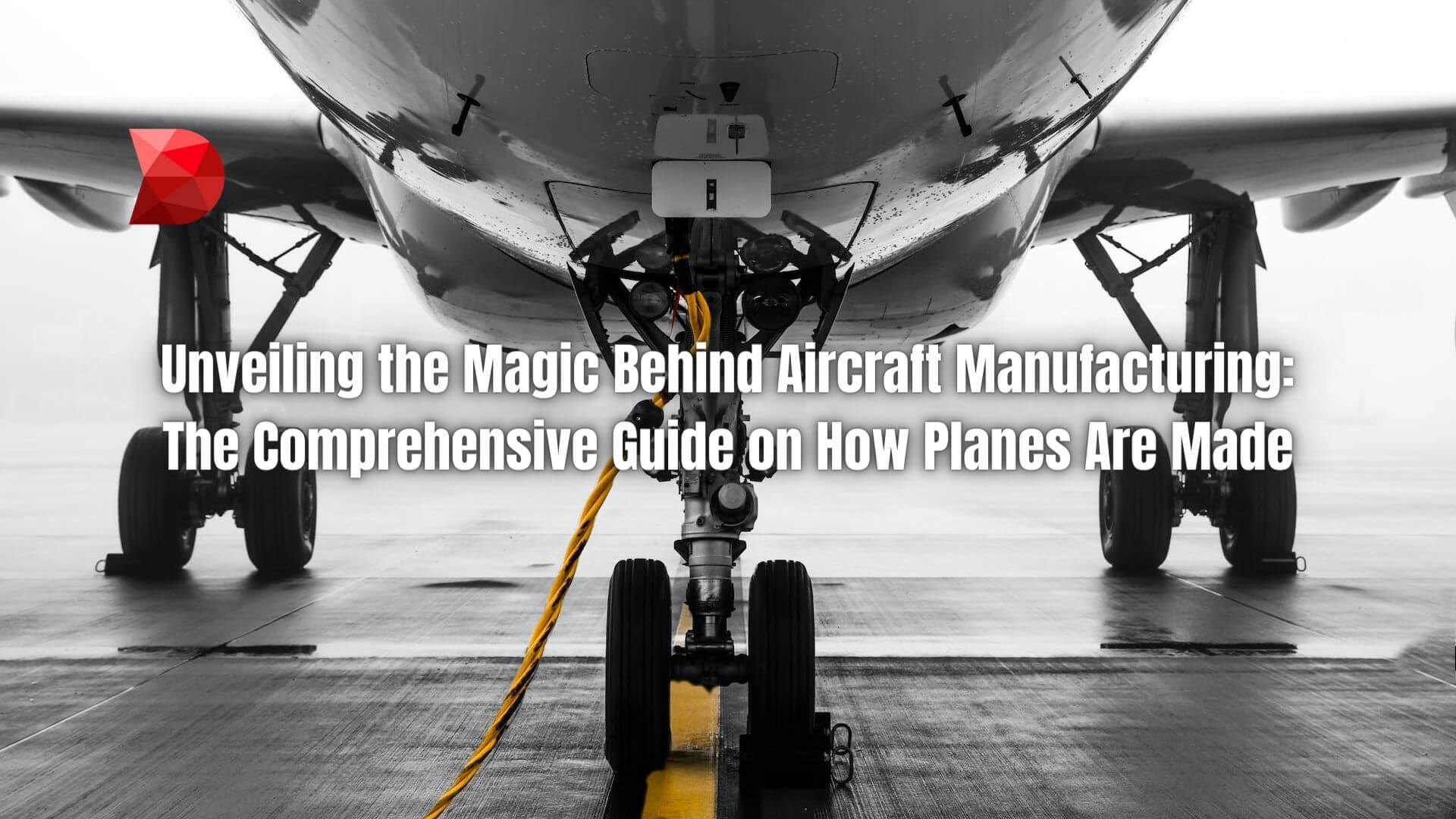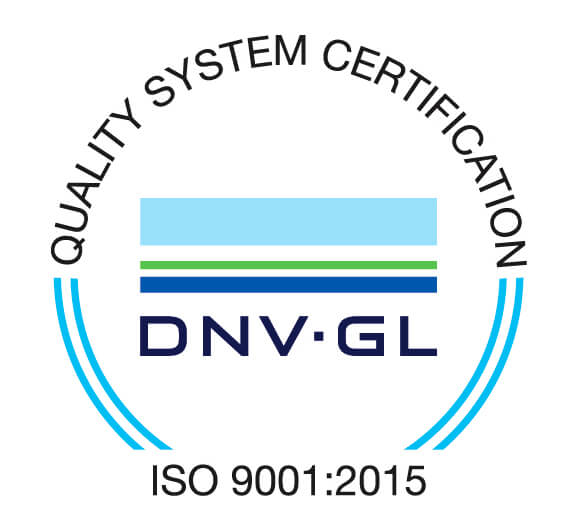The aviation industry, a marvel of human achievement, is more than just the magic of flight. A complex network of systems and processes enables us to traverse the skies. Central to this network is aircraft manufacturing, the engine room where the magic takes shape.
Understanding how aircraft are made isn’t just for pilots or engineers; it’s the knowledge that can enrich anyone with a curiosity about the world of aviation or the intricacies of manufacturing.
Creating an aircraft is a masterpiece of modern engineering, involving a blend of highly skilled human labor and increasingly sophisticated automated systems. These latter, in particular, have revolutionized the industry, making the production of complex parts more efficient, affordable, and reliable.
But how does it all come together? Our journey will unveil the intricate aircraft manufacturing process from raw materials to the final assembly. This is where we pull back the curtain and explore how this monumental feat of human innovation is achieved.
Table of Contents
ToggleHistorical Perspective
The evolution of aircraft manufacturing is a testament to human innovation and technological progress. In the early days of aviation, aircraft were primarily constructed using wood and fabric. The Wright Brothers’ first successful flight in 1903 was in a biplane built of spruce wood and muslin. As we moved into the 20th century, the advent of stronger, lightweight materials like duralumin marked a significant shift in aircraft production techniques.
The functionalist design principles of the Bauhaus Movement in the 1920s and 1930s profoundly influenced aircraft design, emphasizing simplicity, lightweight construction, and aerodynamic efficiency. This led to the creation of aircraft such as the Junkers F.13, the world’s first all-metal transport aircraft, and the iconic Douglas DC-3, which revolutionized air transport in the 1930s and 1940s with its advanced aerodynamics and efficient fuel consumption.
World War II brought a new urgency to aircraft manufacturing, leading to the development of standardized, modular designs that could be mass-produced. The post-war era then saw a shift toward jet propulsion, forever changing air travel’s speed, efficiency, and safety.
The advent of computer-aided design (CAD) in the latter half of the 20th century was another critical milestone in aviation history. CAD made it possible to design complex aircraft components with precision and detail previously unattainable. It also paved the way for introducing computer numerical control (CNC) machining and automation in manufacturing, greatly enhancing accuracy and efficiency.
Today, with the integration of advanced materials like carbon fiber composites and the proliferation of automation and digital technology, we are witnessing yet another transformation in aircraft manufacturing. From drone technology to green aviation, the industry continues to evolve, guided by sustainability, efficiency, and safety principles.
Key Components of Aircraft Manufacturing
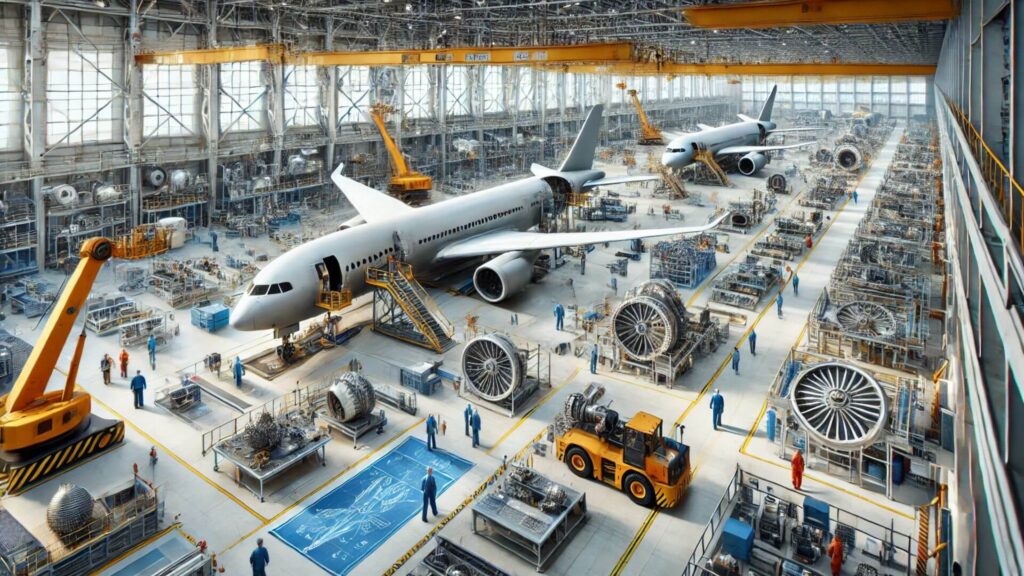
In aircraft manufacturing, the process can be broadly divided into three key areas: Design and Engineering, Materials Selection, and Manufacturing Processes. Each stage plays a fundamental role in creating aircraft, from the initial blueprints to the finished product. Let’s delve into these aspects to understand the airplane manufacturing process further.
Design and Engineering
Aircraft design and engineering are the responsibilities of dedicated aerospace engineers who use advanced software to create blueprints of the aircraft. These professionals design the aerodynamic shape, determine weight and balance, and specify the aircraft’s control systems. Innovations in aircraft design are constantly emerging, with engineers incorporating newer technologies and systems to enhance fuel efficiency, reduce noise pollution, and improve the aircraft’s overall performance.
Materials Selection
Selecting suitable materials for aircraft manufacturing is crucial as the materials used need to be both lightweight to allow for greater fuel efficiency and durable to withstand extreme conditions. In the past, materials like aluminum and titanium were popular, but technological advancements have led to the development of composite materials. These composites, such as carbon fiber reinforced polymers (CFRP), offer superior strength-to-weight ratios and corrosion resistance and have become increasingly favored in aircraft manufacturing.
Manufacturing Processes
The manufacturing process of an aircraft involves both traditional and modern methods. Conventional manufacturing methods include casting, forging, and machining, which are still used in certain aircraft parts. However, the advent of technologies such as Computer Numerical Control (CNC) machining, additive manufacturing (3D printing), and automated assembly lines have revolutionized the industry, offering higher precision, greater efficiency, and increased production speed. These modern manufacturing technologies have also produced more complex parts and structures, thereby contributing to the continual advancement of aircraft design and performance.
The Assembly Line
Aircraft assembly is an intricate process where all the separate components and systems come together to form a single, fully functional aircraft. The assembly process begins with the arrival of the main components: the fuselage, wings, tail assembly, and engines. Each component has been built and tested individually before arriving at the assembly line.
- Fuselage Assembly: The fuselage forms the aircraft’s main body and usually arrives in several sections. The sections are joined together using rivets, bolts, or advanced bonding techniques.
- Wing and Tail Assembly: The wings and tail assembly are attached to the fuselage. This involves precise alignment to ensure correct aerodynamics.
- Engine Installation: The engines, having been tested and certified, are then installed on the aircraft.
- Systems Integration: Once the major components are in place, the various systems – such as electrical, hydraulic, and avionic systems – are installed and integrated.
- Interior Installation: The interior furnishings, including seats, galleys, toilets, overhead bins, and cockpit equipment, are installed.
- Painting and Finishing: The aircraft is painted according to the airline’s livery, and final touches like decals and registration marks are added.
Integration of Various Components and Systems
The integration of components and systems is a meticulous process involving the coordination of multiple teams. For example, the electrical, hydraulic, fuel, and avionics systems are integrated throughout the aircraft, routing through the wings, tail, and fuselage. These systems must be installed in a precise sequence to allow for correct operation and maintenance access.
Quality Control Measures During Assembly
Quality control during assembly is paramount to ensure the aircraft is safe and reliable. Rigorous inspections are conducted at every stage of assembly. Non-destructive testing (NDT) techniques check for structural integrity, while system tests ensure all components function as expected.
Upon completion of the assembly, the aircraft undergoes a series of ground tests before it is deemed ready for its first flight — the so-called ‘maiden flight,’ which is a part of the certification process. By adhering to these strict quality control measures, manufacturers can be confident that the aircraft they produce will meet or exceed all safety and performance standards.
Testing and Certification
After carefully assembling an aircraft, it undergoes rigorous tests to ensure optimal safety and performance. These tests are designed to evaluate the aircraft’s strength, endurance, and safety in a wide range of conditions.
Rigorous Testing Procedures for Safety and Performance
Aircraft testing involves meticulous procedures where every aspect, from the most minor component to the entire structure, is put through rigorous tests. These include static tests to measure the strength and flexibility of the aircraft, fatigue tests to evaluate endurance levels under repeated stress, and flight tests to assess everything from engine performance to control system responsiveness. Advanced techniques like Computational Fluid Dynamics (CFD) simulate aerodynamic properties, while Wind Tunnel testing provides real-world data on lift, drag, and stability.
Role of Regulatory Bodies in Certification
Aircraft certification is a critical process governed by regulatory bodies such as the Federal Aviation Administration (FAA) in the United States and the European Union Aviation Safety Agency (EASA) in Europe. These bodies set the safety and performance standards that every aircraft must meet to be deemed airworthy. They oversee the testing process, review the test data, and grant the final certification, authorizing the aircraft for commercial use.
Challenges and Innovations in Testing Aircraft
Testing aircraft presents several technical and logistical challenges. One of the main challenges is the need to simulate a wide range of flight conditions, such as extreme weather and potential system failures, in a controlled environment. Innovations in this field include the development of advanced simulation technologies and using autonomous drones to mimic various flight scenarios.
Additionally, with the growing focus on sustainability, testing procedures are evolving to assess the environmental impact of aircraft, including noise pollution and carbon emissions measurements. These challenges continue to drive innovation in aircraft testing, aiming to create safer, more efficient, and more sustainable aircraft.
Sustainability in Aircraft Manufacturing
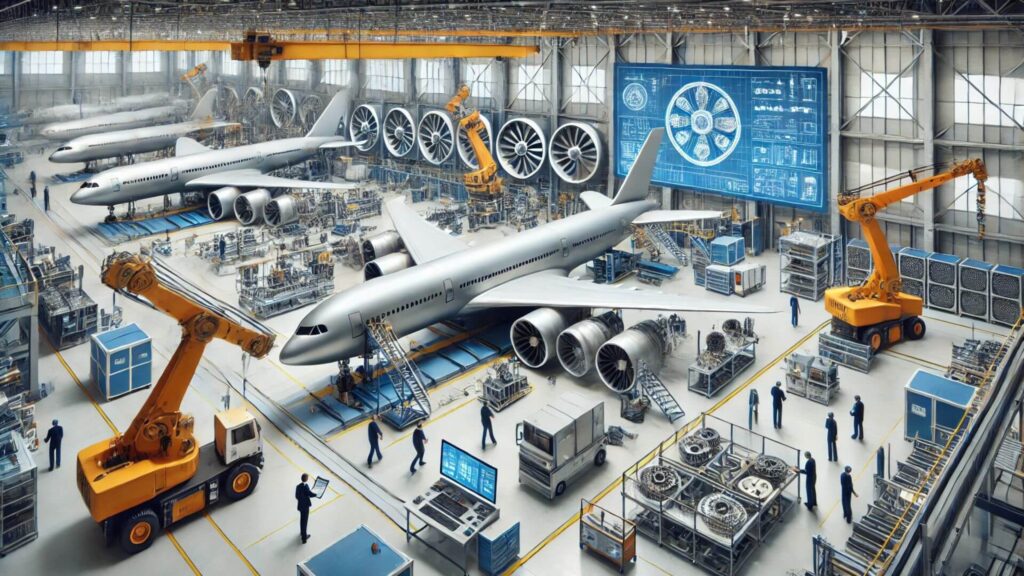
One of the most significant challenges the aviation industry faces today is the environmental impact of aircraft manufacturing and operation. Traditional manufacturing processes consume considerable energy and generate substantial greenhouse gas emissions. Furthermore, using non-renewable materials in aircraft construction contributes to resource depletion and waste generation.
Environmental Impact of Aircraft Manufacturing
Aircraft production, operation, and disposal each contribute to environmental degradation in different ways. The manufacturing process itself is energy-intensive and produces significant greenhouse gas emissions.
Additionally, the extraction and processing of raw materials for aircraft construction, such as aluminum and titanium, also have considerable environmental footprints. Moreover, the end-of-life phase of an aircraft often leads to large amounts of waste, as not all components are recyclable or reusable.
Initiatives and Innovations for Sustainable Aviation
The aviation industry is keenly aware of these environmental challenges and is taking steps to mitigate them. Innovations in materials and manufacturing processes are being explored to reduce resource consumption and waste. For instance, using lightweight composite materials can reduce the weight of an aircraft, leading to lower fuel consumption and CO2 emissions during operation.
Further, initiatives like the Airbus ‘Blue5’ project aim to reduce water, energy usage, CO2 emissions, volatile organic compound emissions, and waste generation in the manufacturing process by 20% per aircraft by 2020.
Future Trends in Eco-Friendly Aircraft Production
The trend towards sustainable aviation is expected to continue, focusing on renewable energy sources, recycling, and the circular economy. One promising development is the exploration of biofuels for aircraft, which could significantly reduce carbon emissions. In manufacturing, adopting Industry 4.0 strategies such as additive manufacturing (3D printing) can minimize waste by only using the material necessary for component production.
Finally, the ‘PAMELA’ (Process for Advanced Management of End-of-Life of Aircraft) Project is pioneering methods for recycling almost all retired aircraft parts, heralding a more sustainable approach to aircraft disposal. Through these and other initiatives, the industry is working to ensure a sustainable future for aviation.
Challenges and Solutions in Aircraft Manufacturing
Aircraft manufacturing faces unique challenges from the industry’s need for precision, safety, and advanced technology. These challenges, however, are also catalysts for innovative solutions that drive the industry forward.
Common Challenges in Aircraft Manufacturing
In the pursuit of building safe, efficient, and robust aircraft, manufacturers often encounter various complex obstacles. One of the notable challenges is managing the high costs associated with sourcing and processing specialty materials like titanium and composites. Integrating new technologies into existing production lines, ensuring impeccable quality control, and meeting stringent regulatory standards are all part of the day-to-day complexities.
The sector also grapples with environmental challenges as the industry seeks to reduce its carbon footprint and transition towards more sustainable practices. An added layer of complexity comes from the need to manufacture aircraft that can withstand various weather conditions and aerodynamic pressures, requiring advanced engineering and thorough testing procedures.
Innovations and Solutions in Aircraft Manufacturing
The industry has leveraged technological advancements to create innovative solutions in response to these challenges. Digital manufacturing technologies such as 3D printing and robotics are increasingly used to reduce production costs, improve precision, and enhance production efficiency.
Moreover, advancements in material science have led to the development of lightweight, durable, and environmentally friendly materials. Using such materials reduces the aircraft’s weight, leading to fuel efficiency, and minimizes waste, contributing to sustainability goals.
Additionally, the industry is exploring using Artificial Intelligence (AI) and Machine Learning (ML) to optimize design, streamline manufacturing processes, and enhance quality control. These digital tools are transforming the way aircraft are designed and manufactured, and their potential is being realized across the sector.
Success Stories in Aircraft Manufacturing
One shining example of successful aircraft manufacturing is the production of the Boeing 787 Dreamliner. This aircraft was the first to use composite materials extensively, resulting in significant weight reduction and improved fuel efficiency. The manufacturing process also saw the implementation of a global supply chain and assembly line, driving down costs and increasing production efficiency.
Another success story is the Airbus A350 XWB. Its manufacturing process heavily utilized digital technologies, including a digital mock-up for virtual testing and 3D-printed parts. This approach resulted in fewer physical prototypes, reduced time-to-market, and significant cost savings.
These innovative approaches to overcoming manufacturing challenges highlight the industry’s resilience and pave the way for future advancements in aircraft manufacturing.
The Human Element in Aircraft Manufacturing
Despite significant advancements in automation, the human element plays a crucial role in aircraft manufacturing. The industry relies heavily on a highly skilled workforce capable of executing complex manufacturing processes with precision and efficiency.
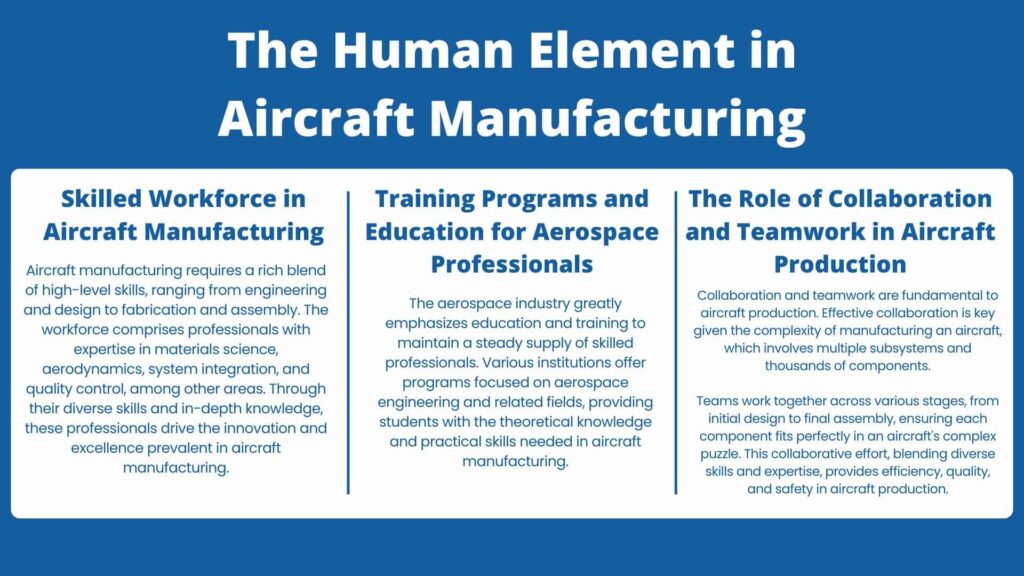
Skilled Workforce in Aircraft Manufacturing
Aircraft manufacturing requires a rich blend of high-level skills, ranging from engineering and design to fabrication and assembly. The workforce comprises professionals with expertise in materials science, aerodynamics, system integration, and quality control, among other areas. Through their diverse skills and in-depth knowledge, these professionals drive the innovation and excellence prevalent in aircraft manufacturing.
Training Programs and Education for Aerospace Professionals
The aerospace industry greatly emphasizes education and training to maintain a steady supply of skilled professionals. Various institutions offer programs focused on aerospace engineering and related fields, providing students with the theoretical knowledge and practical skills needed in aircraft manufacturing.
Simultaneously, companies in the sector often conduct in-house training programs to keep their employees updated on the latest technologies and practices. These initiatives ensure a dynamic workforce ready to meet the industry’s evolving challenges.
The Role of Collaboration and Teamwork in Aircraft Production
Collaboration and teamwork are fundamental to aircraft production. Effective collaboration is key given the complexity of manufacturing an aircraft, which involves multiple subsystems and thousands of components.
Teams work together across various stages, from initial design to final assembly, ensuring each component fits perfectly in an aircraft’s complex puzzle. This collaborative effort, blending diverse skills and expertise, provides efficiency, quality, and safety in aircraft production.
Future Trends in Aircraft Manufacturing
The aircraft manufacturing industry constantly evolves, with emerging technologies poised to revolutionize the sector further. These advancements are not only enhancing efficiency and sustainability but also have the potential to disrupt traditional methods of aircraft production.
Emerging Technologies Shaping the Future of Aviation
Artificial Intelligence and Machine Learning continue to make significant strides in aerospace, from predictive maintenance to autonomous flight systems. Virtual and Augmented Reality (VR/AR) are also gaining traction, used in everything from design and manufacturing to training and maintenance.
Another promising technology is additive manufacturing or 3D printing. With the capability to produce complex parts while minimizing waste, this technology could fundamentally alter aircraft production. Additionally, nanotechnology and material science advancements are expected to lead to the development of even lighter and more durable composites.
Potential Disruptions and Game-Changers in Aircraft Production
One potential game-changer is the rise of electric and hybrid-electric propulsion systems. As the industry seeks to reduce its environmental impact, these systems offer a promising alternative to traditional jet engines. The successful implementation of these technologies could dramatically alter the landscape of aircraft production.
Another disruption comes from advancements in autonomous flight technologies. With companies investing heavily in drone and Unmanned Aerial Vehicle (UAV) technology, the production of autonomous aircraft may soon be a reality. This shift could dramatically change how aircraft are designed and manufactured and how they are operated.
The Outlook for the Aircraft Manufacturing Industry in the Next Decade
Looking ahead, the aircraft manufacturing industry appears poised for continued innovation and transformation. The concurrent evolution of multiple disruptive technologies suggests a future characterized by increased efficiency, reduced environmental impact, and enhanced safety.
However, with these advancements come new challenges, including regulatory hurdles, cybersecurity risks, and the need for a highly skilled workforce to implement and manage these new technologies. Nonetheless, the industry’s track record of innovation and resilience bodes well for its ability to embrace and overcome these challenges in the coming decade.
Frequently Asked Questions (FAQs)
Q1: What is the role of automation in aircraft manufacturing?
Automation is playing an increasingly significant role in aircraft manufacturing. It is used to streamline and standardize processes, improve accuracy, reduce labor costs, and ensure high-quality output. Automated systems are used in various tasks, including fabrication, assembly, inspection, and testing. The use of automation also helps reduce manufacturing time and enhances safety measures.
Q2: How has digital technology transformed aircraft manufacturing?
Digital technology has revolutionized aircraft manufacturing in several ways. Using digital mock-ups for virtual testing has minimized the need for physical prototypes, saving time and costs. Furthermore, 3D printing technology allows for producing complex parts with unprecedented precision. Digital technologies also facilitate real-time collaboration, data analysis, and quality control, improving efficiency and product quality.
Q3: What strategies are employed to ensure quality control in aircraft manufacturing?
Quality control in aircraft manufacturing involves a multi-faceted approach. It starts with rigorous testing of materials and components. Manufacturing processes are closely monitored to ensure adherence to specifications and standards. In addition, there’s a continuous review of manufacturing procedures for potential improvements. The final product undergoes exhaustive testing before being approved for flight. Moreover, the workforce involved in these processes is highly trained, and their skills are regularly updated to keep pace with technological advancements.
Streamline Aircraft Manufacturing with DATAMYTE
DATAMYTE is a quality management platform with low-code capabilities. Our Digital Clipboard, in particular, is a low-code workflow automation software that features a workflow, checklist, and smart form builder. This tool lets you automate the processes of quality control, compliance, and data collection.
DATAMYTE also lets you conduct layered process audits, a high-frequency evaluation of critical process steps, focusing on areas with the highest failure risk or non-compliance. Conducting LPA with DATAMYTE lets you effectively identify and correct potential defects before they become major quality issues.
With DATAMYTE, you have an all-in-one solution for managing your entire quality assurance process, from design to production. Our platform is highly customizable, easy to use, and scalable to fit your aircraft manufacturing operations’ unique needs. Book a demo now to learn more.
Conclusion
Thanks to technological advancements and automation, aircraft manufacturing has come a long way. Key developments such as Artificial Intelligence, Machine Learning, Virtual and Augmented Reality, 3D printing, and advances in nanotechnology and material science have revolutionized the process of manufacturing aircraft.
Electrical and hybrid-electric propulsion systems and autonomous flight technologies are set to disrupt the industry further. However, these innovations are not without challenges — regulatory hurdles, cybersecurity risks, and the need for a skilled workforce are all genuine obstacles the industry needs to overcome.
But the future remains bright. The aircraft manufacturing industry is on the brink of an exciting new era, characterized by efficiency, sustainability, and enhanced safety. It is a fascinating field that demands our attention and awareness, as the continuous evolution of this industry plays an essential role in shaping air transportation and, in turn, our way of life.

